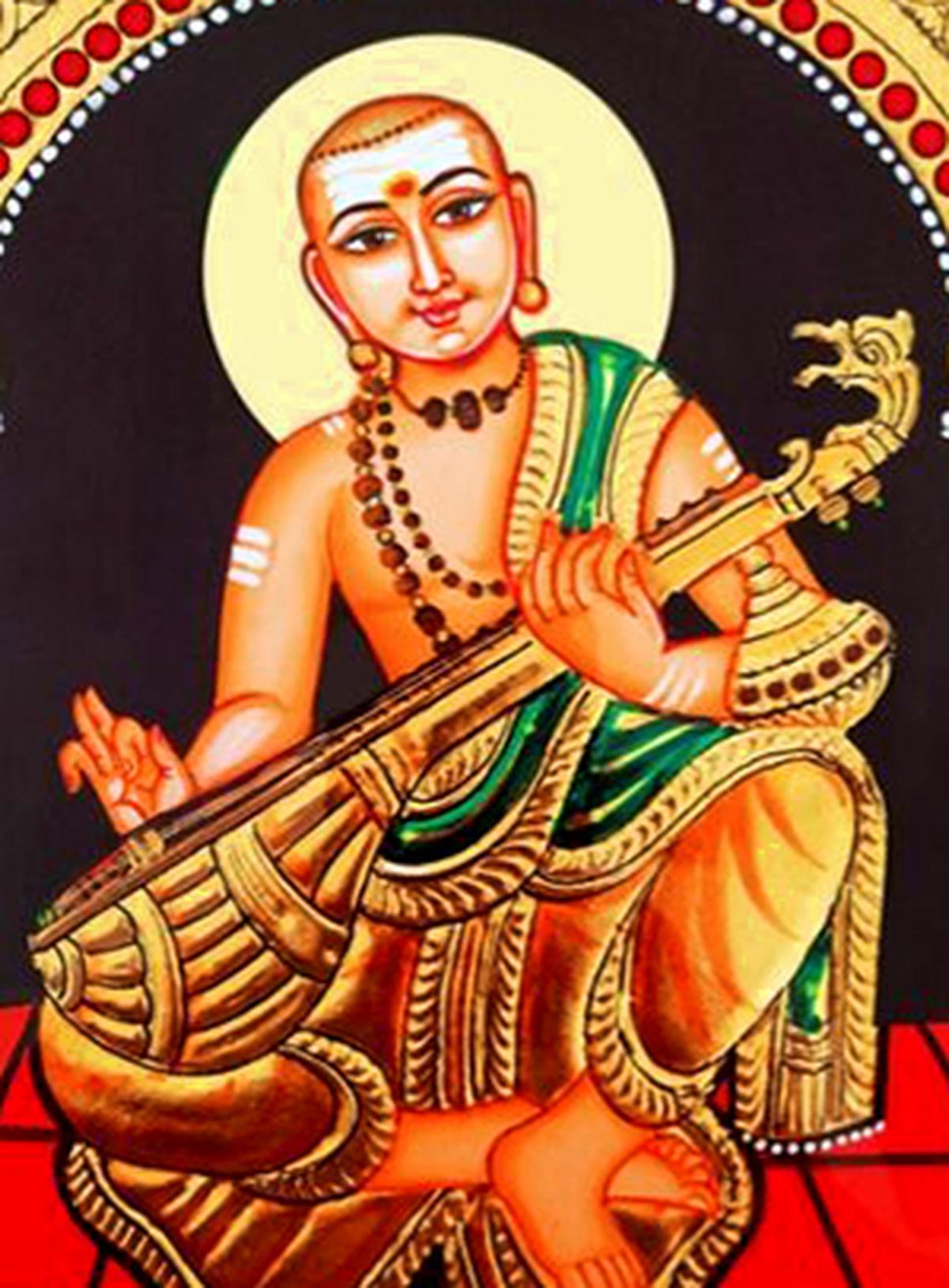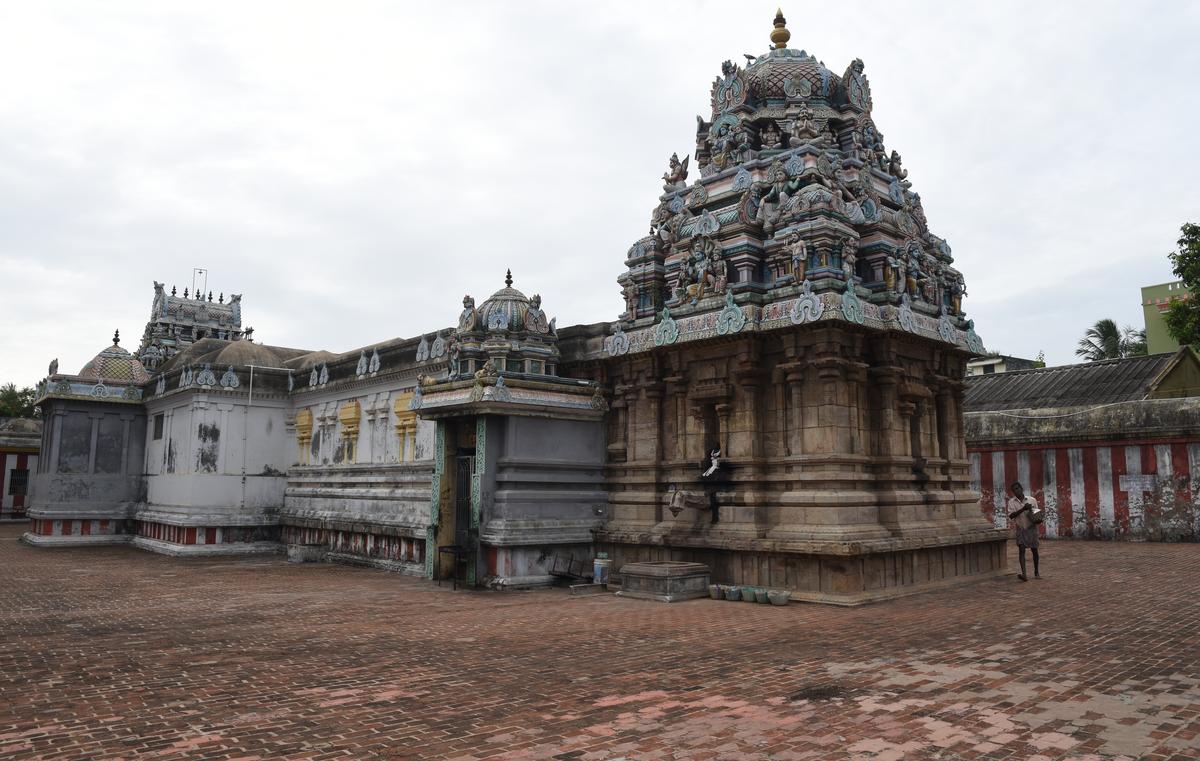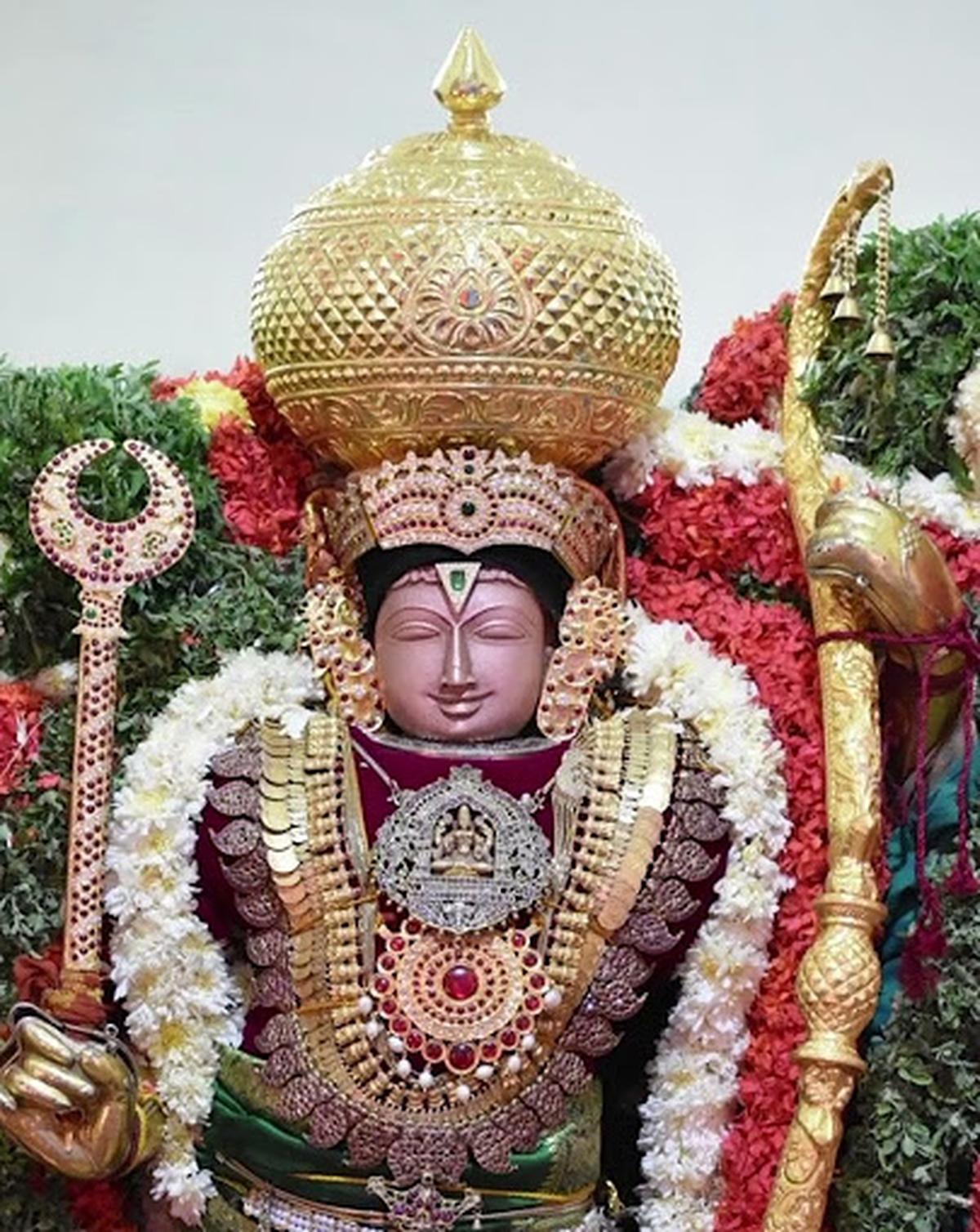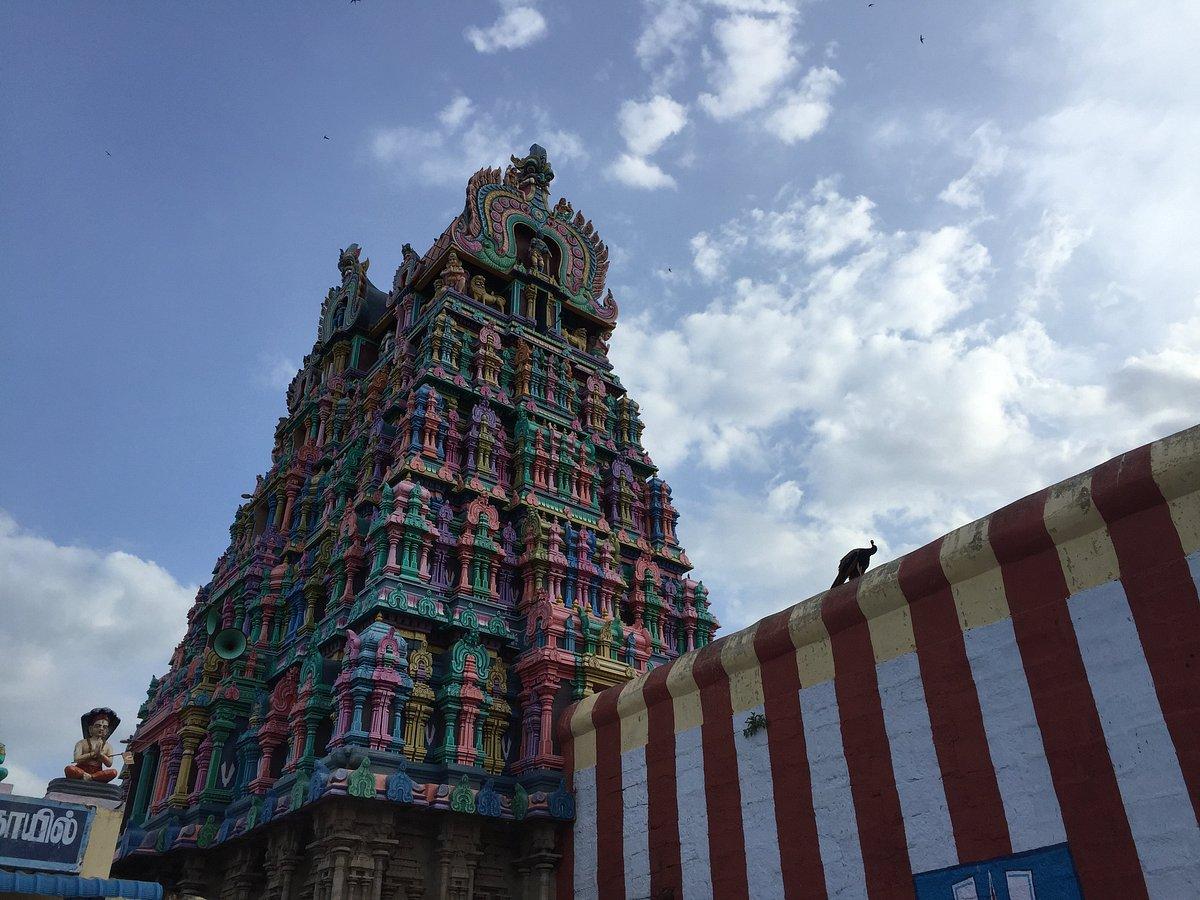It is usual in Carnatic Music to associate certain deities with certain composers. The term frequently used is Ishta Devata, and thus when we speak of Rama, it is usually Tyagaraja who comes to mind. His illustrious contemporary Muthuswami Dikshitar has a small but significant corpus of songs on Rama as well. Given his association with Sri Vidya worship and the Navavarana compositions, Dikshitar is often termed a Devi upasaka. But rather like Adi Sankara, he was an exponent of Shanmatha — the worship of Ganesa, Skanda, Surya, Vishnu, Siva and Devi. He alone among the Carnatic Trinity has compositions for each of these deities.
Dikshitar’s devotion to Rama was probably due to his association with Upanishad Brahmendra Yogin, a savant who lived in Kanchipuram and where his math is still open to visitors. V. Raghavan’s article in the Journal of the Music Academy, Madras Vol XXVII has details on him. Upanishad Brahmendra Yogin enjoys a unique position in Carnatic music history, for he brought both Dikshitar and Tyagaraja to Kanchipuram, though the visits were almost 40 years apart.

The Sangita Sampradaya Pradarsini has nine kritis on Rama, composed by Muthuswami Dikshitar
Upanishad Brahmendra Yogin was a devotee of Rama, and among Dikshitar’s tasks was the setting to music of his Rama Ashtapadi. These are in no way connected to the Jayadeva Ashtapadi in terms of theme. They are named as such because, like the older and famed work, these too have eight charanams, well almost, for the first one has 13! Today, the lyrics of the work survive, though Dikshitar’s tunes for them are lost. Also available are Upanishad Brahmendra Yogin’s Divyanama Keertanams on Rama. It is believed that these served as inspirations for Tyagaraja’s eponymous set of songs.
A cursory glance at Upanishad Brahmendra Yogin’s works establishes how significantly they influenced Dikshitar in terms of lyrics. Several phrases emerge and Dikshitar has not used them just in his Rama kritis but in those on other deities as well. The Rama Ashtapadi also addresses the deity in all eight declensions, which may have been the inspiration for Dikshitar’s famed vibhakti kritis.

Sri Santhanaramaswamy Temple in Needamangalam
| Photo Credit:
M. Srinath
The Sangita Sampradaya Pradarsini (SSP) of Subbarama Dikshitar, published in 1904, has in it nine kritis on Rama, composed by Muthuswami Dikshitar. Among these, only two can be clearly assigned to temples where they were composed. The first is ‘Sri Ramam’ in Narayana Gowla where the kshetra name Darbasayanam is clearly mentioned. Rama here, contrary to all other shrines, is in a recumbent posture, on a bed of darba grass, awaiting the grace of the ocean before building a bridge on it. The second composition is ‘Santanaramaswaminam’ in Hindolavasanta, which mentions the town where it is situated as Yamunambapuri. This is today Needamangalam and the temple to Santanarama here is famous.

The kriti ‘Kothadandaramam anisam’ (Kokilarava) is attributed to the temple at Vaduvur, known for its utsava icon of Rama and its bewitching smile.
| Photo Credit:
Special Arrangement
However, the song as it appears in the SSP lacks the charanam and, therefore, the mudra ‘Guruguha’, an identifier that is needed for making it a Muthuswami Dikshitar composition. The book, however, says it is his work. Later publications have a charanam added, and The Music Academy’s Tamil edition of the SSP accredits Sangita Kalanidhi Justice T.L. Venkatarama Iyer as the source. But it sheds no light on where he obtained it from. The absence of the rishabha throughout this added charanam, while it is used liberally in the pallavi and anupallavi of the kriti as seen in the SSP, also makes it a puzzle.
The remaining kritis in the SSP on Rama are all addressed to the deity without any mention of location or shrine. In recent times, the kriti ‘Kothadandaramam anisam’ (Kokilarava) is attributed to the temple at Vaduvur, known for its utsava icon of Rama and its bewitching smile. However, there are no references to the place or this idol in the composition.
Perhaps, the grandest of the Dikshitar compositions on Rama is ‘Mamava pattabhirama’. Composed in Manirangu, it is a stunning word picture of the Lord during his coronation. The lyrics seem inspired by, or served as inspiration for, the standard Thanjavur paintings of Rama’s coronation. Dikshitar mentions everyone — Sita, the brothers, Anjaneya, Sugriva and his entourage, Vibhishana, and the seven sages. While there is a legend that this was sung by Dikshitar and his disciples when they met with Tyagaraja at Tiruvaiyaru, it could well be a composition at the Ramaswami temple in Kumbakonam where the deity is in coronation mode. But then, this too is conjecture.

The Adi Jagannatha Temple that houses the Darbasayanam Rama sannidhi.
In later years, a Rama Navavaranam, attributed to Dikshitar emerged. This had a set of nine songs, of which just two, ‘Ramachandram Bhavayami’ (Vasanta) and ‘Ramachandrena’ (Manji) were in the SSP. The set had songs completing the remaining declensions. The provenance of these songs is unknown as it is impossible to identify the manuscript source for these. The term Navavaranam too is a misnomer — being modes of address, they can at best be considered vibhakti kritis.
Published – April 03, 2025 12:45 pm IST
























